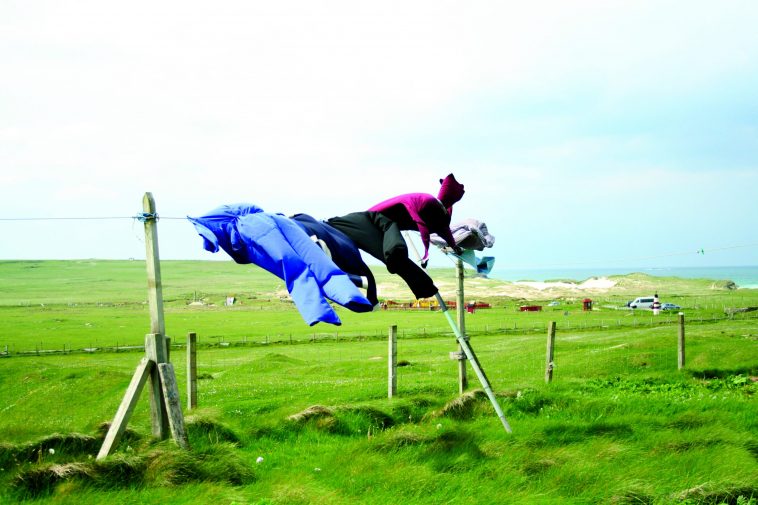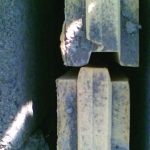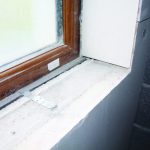An exposed site is more often than not a landmark location and this is quite often the main reason for choosing one. It is also frequently secluded, generally rural and possesses exceptional views. Also affecting site choice are the perceptions of the house on a hill, plain or coast which appeals to poignant, exciting or idealistic notions or memories. Plus building on one shouldn’t cost much more than building a ‘regular’ home. So how do you go about designing your own windswept abode? Les O’Donnell explain
Historically, few rural people would have chosen to build on top of a hill. Just have a look at the older farmhouses and rural cottages and you will see that they used the trees that surrounded them wisely, most notably by tucking their homes into the topography of the land to provide shelter from the elements, always with a nearby source of fresh water. Rural settlement patterns also reveal that the preferred positions for upland sites were predominantly on the south or west-facing slopes of hills or valleys. An excellent example of this can be seen on the Glennelly Valley in the Sperrin Mountains, Co Tyrone. Conversely, a site on the northern or eastern face of a hill will be exposed to the coldest winds and due to shading, will have a reduced amount of sunshine with minimal or even non-existent sunsets, when compared to one on the opposite sides of the valley.
This once important feature has become forgotten or disregarded by many, with designers regularly being asked to obtain planning approval for a house on the top of a hill. Some recently built houses in fact arguably ‘stick out’ a bit too prominently, an effect which has been exacerbated by excessive tree or hedge removal. These days we have therefore been experiencing a return to the older type of self-sustaining lifestyle of our forefathers, which is making exposed-site dwellers concentrate more on the shelter provided by their immediate surroundings. Nowadays truly exposed rural sites are unlikely to be sought or permitted, except where they are approved for a conversion or replacement dwelling.
Views and orientation
It is of course important to point out that we do, however, have some very good quality exposed sites which can take advantage of their position and orientation through good house design and common sense management of resources, such as shelter vegetation. Such sites are desirable and therefore valuable and, when properly developed, can integrate successfully with the local environment. If the site is on a hill, raised ground or even a cliff top, it will be safe from the long term effects of rising water levels due to global warming. Windy locations also tend to suffer less from ‘frost pockets’, although ‘low cloud’ can occasionally be a problem at higher altitudes. On most exposed sites snow will usually be heavier than in sheltered areas, but with a bit of forward planning it need not be too big of a problem. Exposed coastal areas, on the other hand, will generally experience fewer and less heavy snowfalls than those at lower altitudes.
Also, there may well be less fog or mist over exposed sites, which will make passive and active solar systems more efficient unless low cloud is regularly experienced., and wind is (clearly!) freely available at speeds useful for wind-generated electricity. Building materials, whether built or stored in a windy position will also dry out faster than those in a sheltered but wet site. And good clothes drying areas are easier to find! So there are some notable benefits to building on an exposed site – the key is to make use of good design and common sense.
[adrotate banner="58"]Probably the most challenging exposed site to develop would be one which lies on the shaded north or east facing slopes of a substantial hill or one that is on or near an open unsheltered floodplain. These are to be avoided if at all possible! Now if the vista happens to be facing the same way as oncoming prevailing winds, it will be a question of having to decide between keeping the views and providing shelter. Good house design must prioritise between the conditions (where the house should exploit the potential benefits) and the clients’ needs. A north facing elevation will be colder but can be very dry, whilst south and west facing elevations will be warmer but often wetter. An east-facing elevation can suffer from biting wintry winds but will benefit from morning sun which will lift night frosts faster. Note that the risk of falling trees is always a design concern and in the case of exposed sites, special consideration must be given to them. Less importantly perhaps but a major irritation nonetheless is windblown litter on exposed sites beside high-traffic routes! Most houses will be affected to a greater or lesser degree by these conditions and it is down to the skill and experience of the designer to use or avoid them as necessary.
Rural planning guidelines will frequently stipulate that (as a minimum) the elevations of a house which are open to public view should be of a traditional design. Planners will consider contemporary designs in rural areas, but experience has shown that it is usually much more difficult to gain approval. So a site where the rear of the house (i.e. the parts not on public view) faces south can benefit considerably from solar gain as large glazed areas will generally be achievable without alarming the planners. The conflict emerges when the client insists on building a ‘sun room’ on the colder or exposed elevations, which will greatly affect energy efficiency. Indeed, orientation is crucial so be flexible with regards to wanting your home to face the public road! It is therefore possible to design a house to high-performance standards, even on an exposed site, but the front and sides will most likely have to be kept to a traditional design.
Structural loading considerations
Until the aftermath of a gale, most people are unaware of the very high loads imposed on buildings by wind. In the UK and Ireland, we have even experienced the odd hurricane and although these are uncommon, such an occurrence must be allowed for in the design as per the building regulations. If however, you are looking to build unusually long or high walls, large clear spans over openings or opt for an unusual roof solution then the structural integrity must be proven by an engineer’s design and calculations. Indeed, in all situations where there are potentially unusual loads on the structure, the architect or architectural technologist will engage the services of a structural engineer to design a cost-effective solution.
Wind loads on roofs and walls and other external fittings will clearly be increased when building on an exposed site. To put this in context, if the imposed loads from wind necessitates an increase in rafter sizes from 150mmx38mm to say 150mmx50mm (an increase of 32% in materials) and costs in timber rafters for a dwelling are £2,000 or €2,300 then it will cost £640 or €730 extra to upgrade for the higher load. This example is representative, but of course rafters are not the only structural component of a roof and we would need to examine a design in detail before arriving at an accurate estimate, which would include the purlins (timber or steel). A roof constructed using prefabricated trusses might require either heavier truss components or standard trusses at smaller spacings.

Roof repairs due to wind damage are expensive, so your choice of slates or tiles will be critical. This is usually based firstly upon appearance; however the angle of pitch, number of fixing points and degree of overlap are the principal characteristics affecting resistance to driving rain and uplift from wind. Slates or tiles for a typical roof will cost £3,000 or €3,500 for cheaper flat concrete tiles to £10,000 or €11,500 for good quality synthetic slates with three-point fixing. Somewhere in between you should find a slate or tile which is aesthetically pleasing and which will remain secure and weather-tight over its expected lifetime. Good alternatives are the lightweight galvanised steel tile panels which are finished to give an appearance similar to that of slates or concrete roof tiles and which possess numerous advantages over traditional systems. One such benefit is the requirement for less structural timber, as they are around 1/10th the weight of concrete tiles over the same area. They are available in the flat black or grey style which is habitually prescribed in planning approval conditions for rural NI and also in other patterns for the various regions of the UK and ROI.
As long as unduly absorbent materials are avoided, external wall finishes should not need to differ from those used on any other site, but it is generally accepted that clay bricks will suffer more than concrete bricks in exposed situations due to wetting and freezing cycles which cause spalling. Workmanship is also critical where plaster or render is extensively used as an external finish.
Where the site is less than 500 metres from the coast, it is necessary to use stainless steel as opposed to galvanised or painted steel for exposed structural elements. It would be prudent to increase the minimum distance according to the degree of exposure, wind direction and maritime region. Components which are concealed within a cavity wall but in direct contact with the outer ‘skin’ such as wall ties and lintels, etc, can be subjected to periodic wetting and therefore fall under this category.
Effects of driving rain will also influence the house design. Where horizontal driving rain is a frequent feature, wall and roof materials, building form, roof overhang and angle of roof pitch must be carefully considered. Also, workmanship on insulation, airtightness, damp proofing and flashings will need to be properly supervised and eco-technologies such as straw bale or rammed earth walls will be more difficult (but not impossible) to protect. Green roofs are a very useful means of reducing and slowing down surface water run-off into drainage systems and should always be considered, especially in areas of high rainfall.
Snow loading, particularly drifting snow, is an important issue to consider, especially where there are low-pitch or flat roofs. Snow can also impose extreme loads on some balconies and it is therefore essential that these elements are covered in the structural design and site management plan. Note that predicted snow depths on roofs will also influence the heights of some vent systems. Also, do not forget about glasshouses and polytunnels which will more often than not be of insufficient strength to carry heavy snow loads.
Other fixtures and fittings should be fitted securely in strict accordance with the manufacturer’s written instructions. TV aerials, external light fittings, weathercocks, vent cowls, overhead power or telecom cables, etc., all need to be given special attention and if a fixing method appears to be insufficient, then it probably is and should be strengthened or exchanged for a better one. Larger chimney pots have become a more familiar sight on new dwellings in recent years and must be well secured to the chimney structure – a 75mm deep bed of mortar is recommended as a minimum and mechanical fixings are a good insurance measure for very large pots.
Finally, surfaces such as large windows and garage doors will flex under high winds, so this must be considered at design stage. Generally, a wide garage door on an exposed site will need to be specified as ‘heavy duty’ and unusually large areas of glass will need to be toughened, laminated or otherwise strengthened. Wind induced pressure is a major design consideration for determining glass thickness and glass selection for façades.
Shelter and surroundings
If the site is near a flood plain or low coastal area, it might not be safe from the long term prospect of rising water levels due to global warming, and you should really avoid even considering building in these areas. In fact, building on a flood plain is contrary to most planning guidelines! These low-lying sites must be designed to overcome predicted long-term high water levels, based upon officially validated research data, which means that the design solution will have to consider foundations, floor levels, services, access and drainage. Existing coastal properties can be susceptible to eroding cliffs although one would hope that this would be highlighted on the estate agent’s literature! In the case of coastal sites, prevention of corrosion to any metal components (including wall ties) is a very important factor.
If the site is near water, spray can be an issue and a dwelling on the coast will certainly require more frequent maintenance. Exterior paint, whether on walls or timber, will need to be redone regularly. A well-known paint manufacturer claims up to a 15 year lifetime for its best masonry paint, costing around £350 or €400 for an average dwelling. A budget masonry paint will cost about £170 or €195 for the same house but will last maybe five years. Add in the estimated labour of around £1,000 or €1,150 for each re-paint job and do the sums!
Where shelter is to be planted but views retained, a compromise is usually struck by planting trees at reasonable intervals to filter the wind but not all of the view, and by maintaining hedges at an optimum height. A good hedge will be much more effective at sheltering a site than a close-boarded wooden fence or solid wall since it filters the wind (whereas a wall or fence will create harmful turbulence on the leeward side). It is generally accepted that a hedge will provide shelter at a horizontal distance of maybe 10 to 12 times its height. Traditional beech, oak, holly or hornbeam hedge are vastly superior, both in environmental terms and aesthetic appeal, to a ‘solid’ evergreen hedge of Leyland or Lawson Cypress or similar. Even a traditional deciduous hedge will retain a cloak of brown winter leaves until springtime; beech and hornbeam are particularly good for this. That said, on a very confined site, it might be necessary to save space by using open-boarded timber fences instead of hedges. The spaces between the boards will reduce wind loads on the fence and diminish the wind turbulence.
A good site layout is indeed vital on an exposed site and a detailed landscape design will be essential to enhance and protect the dwelling and its environment by making the most of the site characteristics and features. Gardening can be a bit more difficult but can be made easier by careful attention to boundary planting for shelter. Nevertheless, some species will simply not be hardy enough to survive an exposed site. On the plus side, there will quite probably be less annoying insects (e.g. midges) when you are out enjoying your garden on a sunny afternoon!
Energy efficiency
Increased exposure will reduce the building’s energy efficiency; this is simply due to the larger difference in internal and external temperatures. During the air tests to calculate actual air permeability on the completed building (to assess how it compares to the design calculations), corrections are made for temperature and barometric pressure. This effectively means that a dwelling on a sheltered site will have the same permeability figures as it would on an exposed site, after the adjustments are made to the readings. In real life, external pressure and suction caused by wind will be more pronounced on an exposed site and the thermal energy efficiency will suffer accordingly where air is passing through a porous weak point. If the weak points have all been made airtight, then permeability should remain unaffected.
Good attention to airtightness and choosing features such as storm porches are just some ways in which to combat heat loss. Another is the careful analysis of preliminary calculations, which will allow the designer to optimise the insulation specification. As in any energy-efficient design there will always be unknown parameters, such as the price of oil in 10 years’ time for example, but as a rough guideline, insulation currently represents about 5% to 6.5% of the finished cost of a family home. Increasing the thickness by a considerable amount, e.g. by 50% will only add 2.5% to 3.25% to the total house cost. If this extra insulation cuts your estimated fuel bill in half, then the payback time might be around 10 years.

On a positive note, an exposed site has the potential, through careful design, to make use of the higher wind pressures and suction effects to maximise passive stack ventilation through the dwelling. For instance if the chimney is positioned correctly there will usually be fewer problems with getting it to ‘draw’. An example of a ‘wrong’ position would be on the lee side of the ridge at a height where air turbulence will create higher pressure over the chimney, causing downdrafts. The same principles on position apply to soil vent pipe outlets, extraction fans and home ventilation systems. Clearly, these issues affect all sites but will be much more pronounced on an exposed site.
Of course, a dwelling of traditional appearance would look peculiar with no chimneys, so nowadays it has become common practice to build one or more false stacks. These can be constructed in the traditional way with bricks and mortar but left solid, or they can be used to accommodate the soil vent or other ventilation outlet. They can also be constructed with plaster over mesh and timber framing directly on top of the rafters or even bought as a prefabricated item, but care must be taken that they are of a style and proportion agreeable to the house design, and of structural integrity (especially in windy conditions).
Renewables
When considering renewable energy, then wind power is the very obvious choice for an exposed site. It can make a decent long-term investment nowadays with the added benefits of grant assistance and decent pay-back on power supplied back to the grid. If erecting a wind turbine, get planning permission but only after you have carried out a (preferably long-term) mean wind speed survey using an anemometer. The power in the wind is proportional to the cube of its speed, i.e. double the wind speed will provide eight times the power, so small differences in average wind speed will cause large differences in available wind energy. A site which offers the highest overall wind speeds will give optimum performance.
If planning approval has already been granted for a turbine you should be aware that a useful domestic wind turbine will usually require a 15m mast height, but planners can sometimes be reluctant to allow this on exposed sites and have in the past imposed silly conditions – such as erecting turbines near buildings or trees to minimise visual impact – so check the conditions of the approval. You must also consider the expected growth rates and mature heights of any trees on or adjacent to the site and whether they might interfere with wind speeds over time. Even trees which do not reach the height of the rotor blades will decelerate the wind above the treetops. Likewise, buildings between your site and the prevailing wind can cause turbulence, which needs to be avoided.
The newer generations of turbines are designed to cope with high wind loads and will disengage when gusts exceed the design velocities, so the degree of site exposure should not significantly affect installation costs. It is not possible to comment on all of the turbines available, but it would be a good idea to check if increased foundation dimensions, cable stays or holding down bolts, are required, and to make sure that the supplier’s quotation allows for these items. The smaller type of building-mounted wind turbines will suffer from high wind loads and will transmit those loads to the building; these are therefore not recommended on a very windy site or on existing older buildings where wall strengths have diminished over time.
Other renewables worth considering are solar panels for producing hot water (vacuum/evacuated tubes or flat plates) or electricity (photovoltaic). There will be minimal losses due to increased convection (i.e. cooling effects of the wind) but all of these systems will work well on exposed sites and will often benefit from a lack of overshadowing from buildings or trees, which can affect more sheltered sites. The cost of installation should not differ between exposed and sheltered sites, since the manufacturers will have designed their apparatus for the ‘worst case’ scenario.
On the general subject of externally fixed renewable energy components, most manufacturers take care to design their products to remain structurally stable in the most unfavourable conditions, so there should be very little if any, additional costs on fitting such domestic-scale fixtures. It is always advisable to look for guarantees from established firms and check for the relevant CE markings or quality labels.




